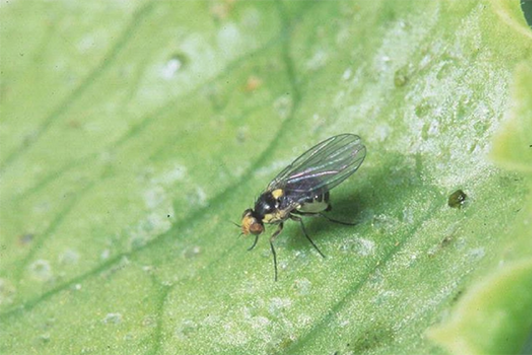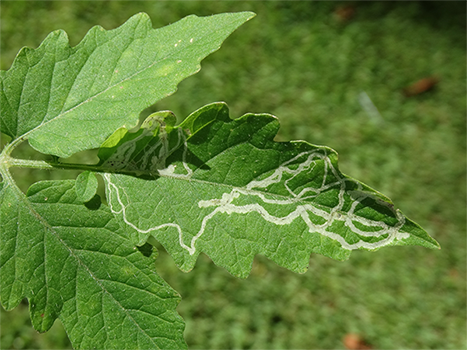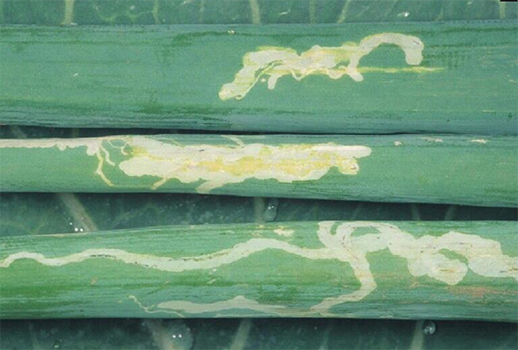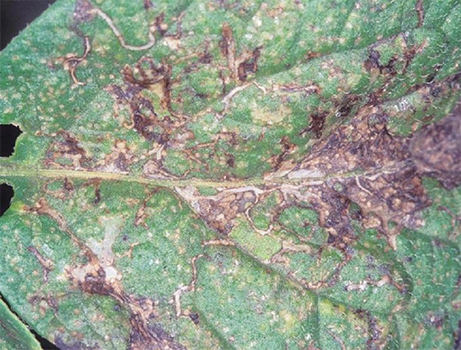Look and report
Serpentine leafminer is a declared pest in Western Australia.
What is the serpentine leafminer?
Serpentine leafminer (Liriomyza huidobrensis) is a tiny fly whose larvae damage plants by tunnelling through the inside of leaves. It is absent from Western Australia.
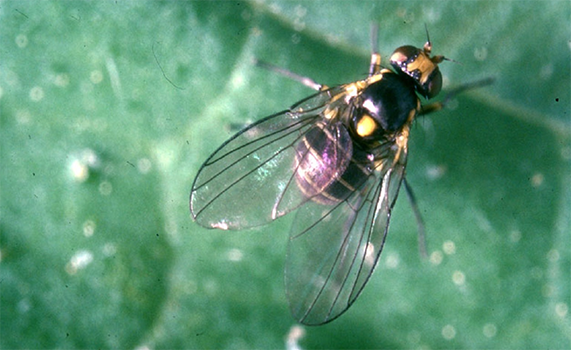
What plants are affected?
Serpentine leafminer has a wide host range and can attack more than 300 different plants. It is particularly damaging in leafy vegetables like spinach, lettuce and Asian greens as well as in tomatoes, potatoes, onions, melons, peas, celery, chrysanthemums, grains and other crops.
Serpentine leafminer has major impact in plant production nurseries.
What do I look for?
- Light green or white squiggly trails or 'mines' on leaf and stem surfaces.
- Trails get wider as the larvae grow.
- Sometimes the trails have blackened edges.
- Adult serpentine leafminers are small black flies with a yellow head and yellow spots on the thorax. Adult flies are 1-2.5 mm long.
|
Leaf mines on tomato |
|
|
Leaf mines on onion |
|
|
Soybean leaf damaged by Serpentine leaf miner. |
|
Which leafminer?
Another serious and unwanted pest, American serpentine leafminer, can produce similar symptoms. Visit the American serpentine leafminer page for more identifying information.
American serpentine leafminerWhat damage can this pest cause?
Serpentine leafminer is a serious economic pest where it does occur.
- The loss of healthy leaf tissue reduces the plant's ability to photosynthesize.
- In severe infestations, leaves wilt and die.
- Leaf damage delays production and reduces the yield of affected crops.
- Unsightly leaf damage makes leafy vegetables unsaleable and reduces the value of ornamental plants and cut flowers.
WA's freedom from serpentine leafminer is supported by general and specific surveillance and specific import requirements to prevent its entry.
How does the serpentine leafminer survive and spread?
- The greatest risk of spread is when people move infested plant material, soil and packaging. Adult flies also hitchhike on vehicles and machinery.
- Although adult serpentine leafminers are not strong flyers, the wind may help them to travel further.
- Adult females pierce the leaf surface and lay eggs inside.
- Eggs hatch in 2-5 days and the larvae start to tunnel and feed.
- Larvae leave the plant to pupate in crop debris or the soil.
WA's freedom from serpentine leafminer is supported by general and specific surveillance and specific import requirements to prevent its entry.
Legal duty to report
Serpentine leafminer is not known to occur in WA. Liriomyza huidobrensis (Blanchard, 1926) is a declared pest under section 12 of the Biosecurity and Agriculture Management Act 2007.
This means that any person who finds or suspects the presence of serpentine leaf miner must report it to the department.

